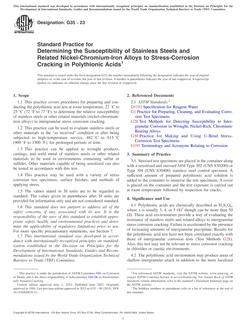
ASTM D6110-02
1.1 These test methods are used to determine the resistance of plastics to breakage by flexural shock as indicated by the energy extracted from standardized (see Note 2) pendulum-type hammers, mounted in standardized machines, in breaking standard specimens with one pendulum swing. These test methods require specimens to be made with a milled notch (see Note 3). The notch produces a stress concentration which promotes a brittle, rather than a ductile, fracture. The results of these test methods are reported in terms of energy absorbed per unit of specimen width (see Note 4).
Note 1 – This standard resembles ISO 179 in title only. The content is significantly different.
Note 2 – The machines with pendulum-type hammers have been standardized in that they must comply with certain requirements including a fixed height of hammer fall, which results in a substantially fixed velocity of the hammer at the moment of impact. Hammers of different initial energies (produced by varying their effective weights), however, are recommended for use with specimens of different impact resistance. Moreover, manufacturers of the equipment are permitted to use different designs of pendulums, which may result in different pendulum rigidities (see Section 5), plus other differences in machine design.
Note 3 – The specimens are standardized in that they have a fixed length and fixed depth, however, the width of the specimens is permitted to vary between limits. One design of milled notch is allowed. The notch in the specimen serves to concentrate the stress, minimize plastic deformation, and direct the fracture to the part of the specimen behind the notch. Scatter in energy-to-break is thus reduced. Because of differences in the elastic and viscoelastic properties of plastics, however, response to a given notch varies among materials.
Note 4 – Caution must be exercised in interpreting the results of these test methods. The following testing parameters may affect test results significantly: method of specimen fabrication, including but not limited to processing technology, molding conditions, mold design, and thermal treatment; method of notching; speed of notching tool; design of notching apparatus; quality of the notch; time between notching and test; test specimen thickness; and environmental conditioning.
1.2 This standard does not purport to address all of the safety concerns, if any, associated with its use. It is the responsibility of the user of this standard to establish appropriate safety and health practices and determine the applicability of regulatory limitations prior to use.
Product Details
- Published:
- 08/10/2002
- Number of Pages:
- 14
- File Size:
- 1 file , 180 KB

